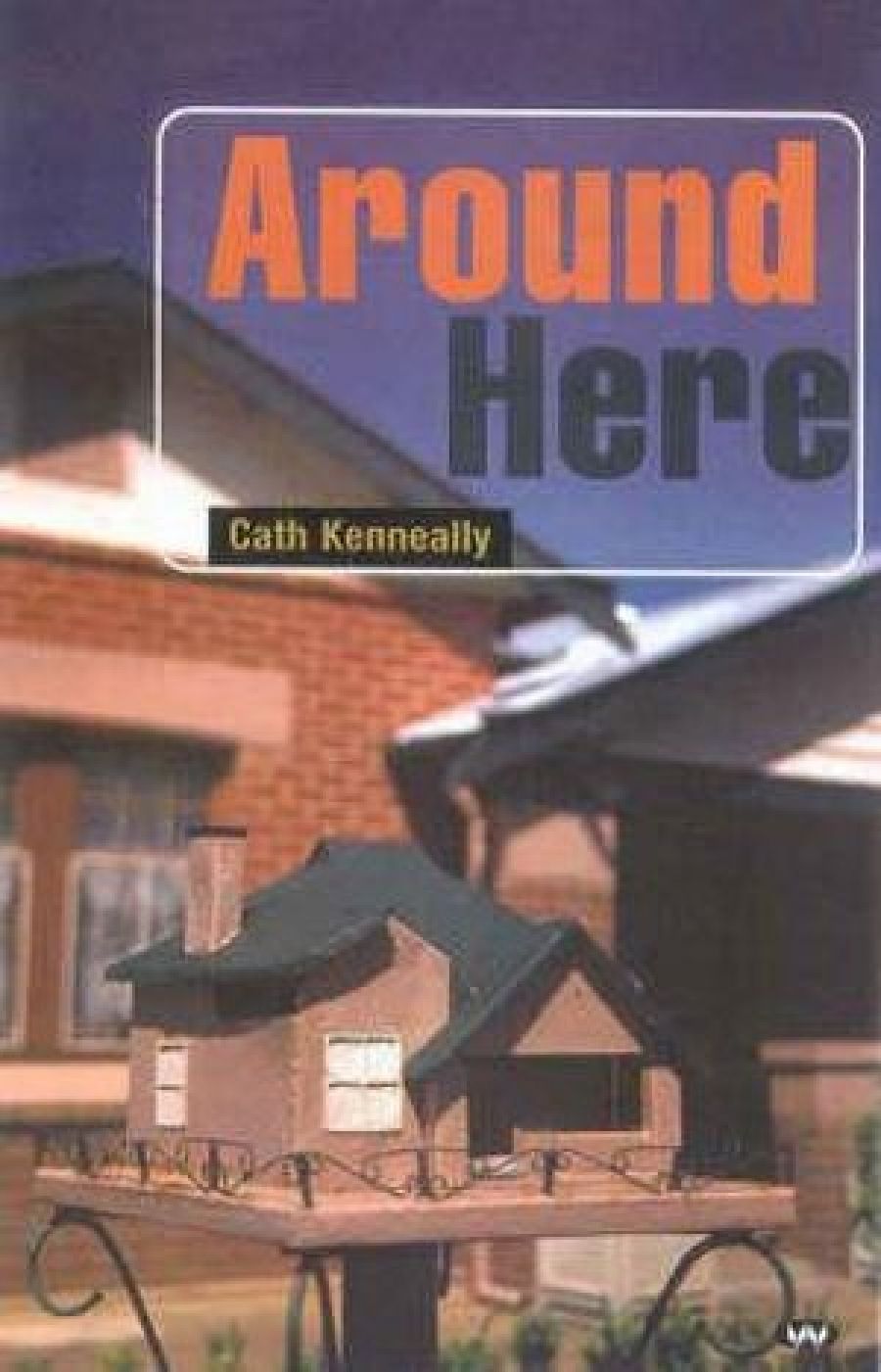
- Free Article: No
- Contents Category: Poetry
- Review Article: Yes
- Online Only: No
- Custom Highlight Text:
Ken Bolton recommends this: ‘What is most valuable in these poems, and what is rare, is Keneally’s avoidance of metaphor and of the conventionally poetic in favour of intelligence and educated plain-speak that, of course, isn’t so plain, so unitary ...’ This well-meant blurb could create some problems, as the volume is actually as metaphoric and conventionally poetic as most modern collections. ‘Plain-speak’ also has an Orwellian feel, particularly with ‘intelligence’ and ‘educated’. Many poetry conventions and metaphors are aids to communication, including their use in general speech.
- Book 1 Title: Around Here
- Book 1 Biblio: Wakefield Press, $16.95 pb, 108 pp
The horizon is always an option in these poems. In ‘Hyeah Come De Cavalry’, the narrator reads The Oppositional Imagination in a restaurant and is irritated both by a ‘rasping and insistent’ Greek woman and an ‘outdoorsy, nothing to / say to the troops’ father of four regimented sons. She rationalises away her anger at the former and considers ‘engineering / an accident’ against the latter – ‘but he looks / the type to hit back’. She leaves, concluding she ‘just can’t bear / anyone being the boss’. She has suggested succinctly that the cavalry might have intruded rather than relieved, but there is also a dash of irony and regret, reminding me of Camus: ‘It will always be too late, thank God.’
Kenneally is skilled at creating such involving (and metaphoric) situations. In ‘The Art of Poetry’, the direction seems to flail (not necessarily fail) towards several targets, including ‘foreign phrases’, academic achievement (including her own) and ‘from 1450 on, male poets’, who ‘thought they were God’. We are told, ‘I topped the course at ANU’ in Medieval English. This helps explain the poem’s vast literary and linguistic list-making, a device common in ME literature because it is entertaining and sensuous. Its pleasure in this poem may be undermined by what seems a dismissal of it as pretence or verbiage: ‘Keep at it, & babble / becomes profundity’. And listed names such as Stendhal and Berryman arouse too much excitement to help comprise a catalogue of boredom. The total effect is not so much an attack on verbosity or misogyny as that of a crisis in self-confidence. Again, however, this enlivens the poem and saves it from any easy literary ideology.
Kenneally can attack targets such as misogyny and authority effectively. The final poem, ‘Around Here’, uses the poetic listing device to catalogue vividly suburban houses, gardens and inhabitants, expanding to reflections on the nuns who taught her as they are in the present, when the ‘Cross Road Redevelopment Project’ exposes their ‘demesne’ as ‘haphazard piles / like our houses, our lives, out here’. In transit, she observes that the leafless frangipani in winter are symbols of ‘stubby, bare lives’, as in the ‘nastier bits’ of My Brother Jack, which attack Helen.
There are convincing arguments (including Johnston’s own) that Johnston was deliberately portraying an opportunistic misogynist in that novel, but Kenneally’s point is still pithy and valuable. In ‘Persons on the Verge’, the persona begins to congratulate herself on her ‘sang- / froid’ at getting through her requiredly potted, apologetic life story in ‘two seconds flat’ at a social gathering, when ‘I want to go home. Lie down for a week’ with major panic symptoms. These are related to her being unable to ‘summon up the willpower to explain’ why she’s reviewed The Beauty Myth unfavourably, since it still portrays women as victims. After more strong anecdotes, the poem finishes tightly with a literary symbolic device: ‘I start to wonder where I’ll find new lip- / stick on a Sunday. Mine’s melted in the car.’
Because of her family and literary sensitivities, there is a frequent mood of numb fairness about the author’s Catholic childhood. This sometimes thaws into grim passion, as in ‘Ruthie’, about her younger sister, who as a toddler was ‘tyrannised’ by a neurotic nun. Now, ‘we’ve compared notes’ and find ‘depths / of diffidence, unease / attacks of panic, low / low days ...’ The poem concludes that since they both have little daughters, they may become more ‘gladiatorial’ because, however wryly, ‘you’ll kill / for your own kind’. Indeed. I will also relish the forthcoming works in which Kenneally becomes prouder of her literary armoury and uses it less on cultural phantoms and even more against hard, real and still dangerous targets.


Comments powered by CComment